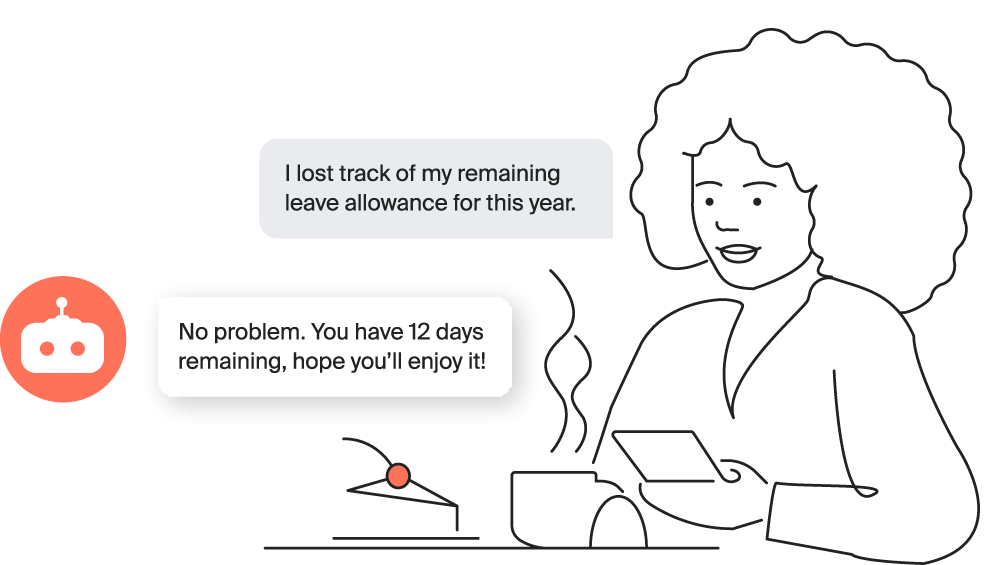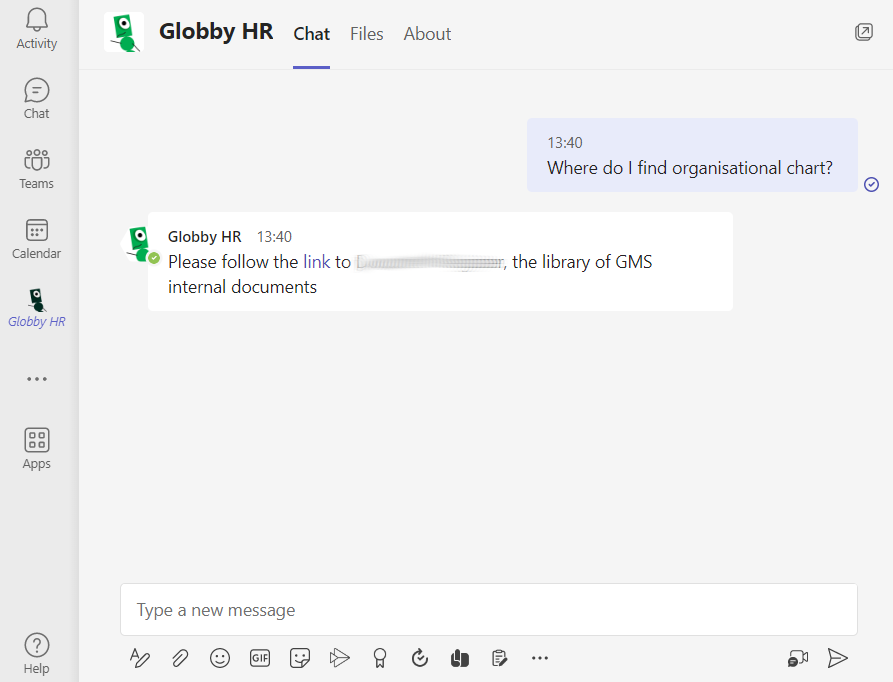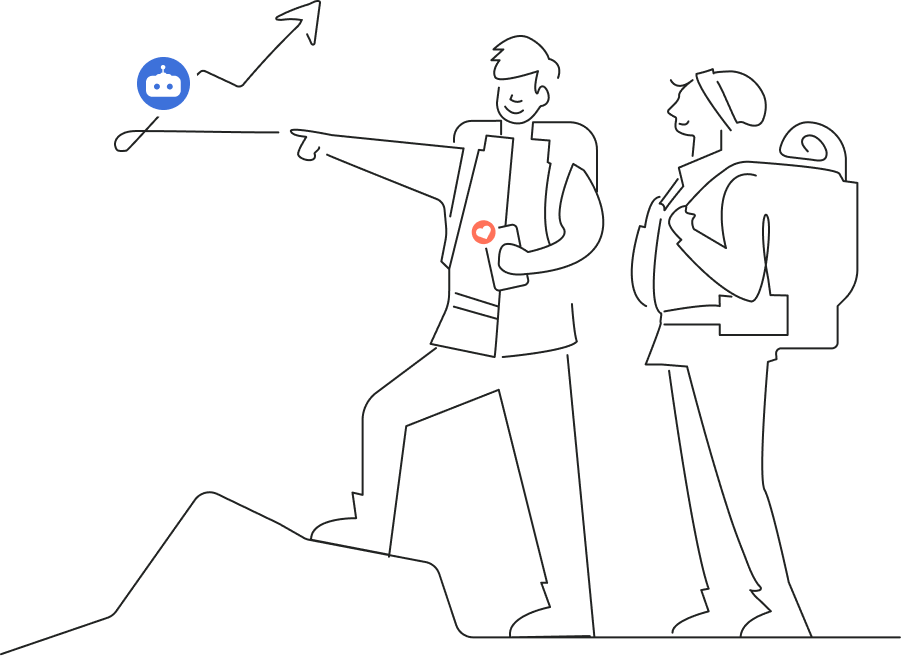HR is a critical strategic business function and yet it often involves so much administrative work that its team members are unable to focus on their key priorities. Recent Gartner research shows that one of the top five priorities for 60% of HR leaders in 2023 is to enable effective leadership and management. 53% consider organisational design and change management essential to stabilise economic, political and digital disruption, but employees’ appetite for change has dropped by 36% since 2016. It’s worrying that 46% of leaders say recruiting the right talent is key to success, yet over 1/3 regard their current talent acquisition strategies as severely lacking. Finally, 42% are concerned about predicting and future-proofing the workforce requirements.
As HR departments become increasingly overwhelmed by repetitive administrative tasks, they are turning to AI chatbots for process automation. Specially programmed HR Chatbots are being deployed as the first line of contact between employees and HR, automating the more mundane HR conversations and bringing greater agility to the department. In a related paper, Gartner predicted that by 2023, 75% of HR enquiries will be handled by conversational AI. These chatbots are helping to elevate the employee experience, enabling better talent acquisition and on-boarding, thus streamlining HR’s administrative and transactional work. This in turn can free up HR personnel to reallocate up to 70% of their time from administrative to strategic tasks, enabling them to properly address the top priorities outlined above.

Talent Acquisition
A successful talent acquisition strategy requires organic posting and paid advertising on a wide range of channels. This can garner a vast number of applications and overwhelm HR personnel. To relieve the pressure, you can deploy an AI chatbot across Facebook, LinkedIn, WhatsApp, SMS or your website and automate the standard talent acquisition processes. By making the chatbot accessible on popular channels like WhatsApp, one of our clients saw click through rates (CTRs) of 77% as employees made full use of self-service to resolve their job application and on-boarding queries.
Amongst the top benefits are the bot’s ability to serve multiple candidates at the same time, answer FAQs 24/7, and schedule interview appointments, all while removing the risk of human error. This limitless scalability can be particularly valuable in sectors such as tourism, which have seasonal hiring spikes.

Self-service Screening
Post application, your HR chatbot can screen candidates, asking qualifying questions to ensure they have the experience required for the role, checking CVs for keywords, and collecting documentation to run background checks. Most interview processes involve at least one competency assessment, and this can also be managed by your HR bot. Enabling self-service and on-demand support via your HR chatbot makes things easier for candidates to fit their job search around their existing work schedules.
Balancing Act
Of course, to win the talent war, it’s essential to balance chatbot usage with human interaction so candidates can get a feel for the company culture and HR can hire based on personality as well as skill. Automating these early-stage administrative tasks, and narrowing the candidate pool from hundreds to a select few, enables HR to focus on providing an excellent 1-2-1 candidate experience at the interview stage.
Keep New Hires Engaged
52% of candidates say their biggest gripe during the recruitment process is a prospective employer’s failure to respond to queries. This gives a poor impression of your company culture and can be damaging to your organisation’s reputation, as candidates may vent their frustrations by word of mouth or on social media. Your AI chatbot can fill in these conversational gaps, assuring the candidate that their application has been received, and notifying them politely and expeditiously if they don’t meet the minimum requirements of the role. It’s important to remember that, whilst a candidate may not be right for this role, they may be perfect for another one in the future or may know someone who is. In addition to this, they would be more likely to recommend your business if they’ve had an outstanding candidate experience. For successful candidates, your HR bot can send helpful reminders about interview times, tasks and even links to the bios of the team members that will be interviewing them.
On-Boarding

Post-acceptance, Pre-start
Once a candidate has been offered a role, it typically takes between one to three months for them to start. Your HR chatbot is perfectly positioned to keep the candidate engaged at this stage without being intrusive. It can answer any additional questions the candidates may have or send them useful resources and links. Some new employees will be grateful for the anonymity a chatbot allows. They may have sensitive or personal questions, for example around legalities, diversity, disability, or disciplinary matters. Or they may simply have a large volume of questions and don’t want to monopolise their manager’s or HR rep’s time. For anything complex or emotional that your HR bot can’t handle, it can be programmed to offer to escalate the conversation to a member of your HR team. Make sure there is always a CTA button available in the chat offering that option, so employees feel supported.
Optimising the On-boarding Experience
90% of businesses experience new hire resignations during on-boarding, and one of the top reasons cited is that the process was overly long and complex. Furthermore, up to 20% of new hires leave within the first 45 days of their new role, and 33% leave after 6 months. This underlines the importance of making on-boarding and initial training streamlined, efficient and thorough by utilising your chatbot. This then frees up HR and managers to help the new recruit to quickly feel fully integrated into the team and comfortable in their role. Your chatbot should ask for regular feedback throughout on-boarding to collect data on how new starters are feeling about the business. Bots with sentiment tracking can gauge the situation in real time and immediately involve an HR rep if there is a problem. Ensure you program your bot to request anonymous on-boarding feedback from all new hires so that you can use the data to continuously improve this critical process.
Long-term Cost Savings
Improving the on-boarding employee experience can bring significant business savings. In the UK it costs an average of £3k to on-board a new team member. Furthermore, when candidates leave, it costs around 20% of their salary to replace a mid-range role and up to 213% to replace an executive! Thankfully though, great on-boarding can boost employee retention rates by up to 82%. So, cleverly combining the speed and efficiency of your AI chatbot with friendly and empathic human interactions is a win-win for employees and the business.
Career Development

Even after the initial on-boarding period your AI chatbot can continue to boost employee engagement and HR efficiencies. Collecting chatbot data at every stage of an employee’s career helps HR to monitor work-life balance, happiness and loyalty to future-proof the workforce. 41% of all employees say career advancement opportunities are crucial for job satisfaction and, for 76% of Millennials, it’s one of the most important aspects of company culture. It’s also important to candidates when they’re deciding which roles to apply for, with 76% saying a business is more appealing if the training, development and career progression path is clear.
A Clearer Career Path
Your HR chatbot can play an important role in training and development. It can answer questions about how to advance up the career ladder, optional upskilling available and CPD that must be completed annually.
Your HR bot should also conduct surveys at regular intervals to ensure employees understand how they can get promoted and are receiving the training they need. It can ask questions like “Where do you see your career in 12 months?” or “Are you satisfied with your career advancement path?” If an employee responds negatively, it can link them to helpful career development workflows or schedule an appointment with HR. Post-training, employees can ask your bot further information on a topic that still needs clarity, saving them hours of research.
Agile Performance Management
Annual or even quarterly reviews are an archaic way to determine employee performance. Research shows that 58% of HR leaders think their current performance management solutions are ineffective, and stressful. Plus they can bring productivity down by 40% while in progress! Even so, Bloomberg reports that 90% of businesses are still relying on this monolithic approach. Luckily, your HR chatbot can help you replace this outmoded process with an agile, ongoing performance management system based on managers and team members completing surveys and feedback at short intervals, such as weekly or monthly. The chatbot provides a medium that’s less impersonal than form filling and less confrontational than a long annual 1-2-1 examination.
Conclusions
For businesses seeking to improve the employee experience, provide frictionless on-boarding, increase job satisfaction and streamline HR conversations and processes, AI chatbots are a great solution. They give HR and managers enterprise-wide visibility and the data to make continuous improvements, so it’s no wonder that a recent ServiceNow survey revealed that 92% of HR leaders believe AI chatbots are key to the future of excellent employee engagement. Crucially, your chatbot will also save your HR department both time and money, enabling them to focus on more nuanced strategic value creation and complex or emotional employee challenges that only an empathic human can solve.
Suggested reading: These multichannel chatbots can also form part of a wider business messaging strategy for more streamlined HR conversations and other internal communications. To find out more check out our blog “Boosting Employee Engagement with CPaaS: 5 Strategies”.

